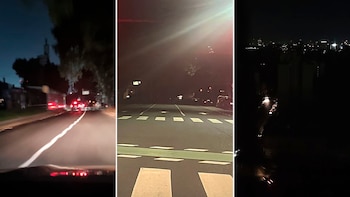
(Bloomberg) -- The search for one of the black boxes from the Sriwijaya Air passenger jet that crashed in the Java Sea on Saturday has resumed after being suspended due to bad weather and heavy seas, Indonesian officials said.
The flight-data recorder was retrieved Tuesday, but the device capturing pilot communications and sounds from the cockpit hasn’t been collected. Sriwijaya Flight 182 plunged into the sea shortly after taking off from Jakarta at 2:36 p.m. with 62 people on board. Rescue workers have been bringing in bags of human remains for identification, along with parts of the Boeing Co. plane.
“The search will be expanded all the way to the shore as the spread of the debris on the water surface is massive,” Bagus Puruhito, head of the search and rescue agency, said Thursday. “The search for the cockpit voice recorder will be intensified with an additional ship.”
The retrieved flight-data recorder is “in relatively good shape,” Indonesia’s National Transportation Safety Committee Chairman Soerjanto Tjahjono said in a telephone interview Wednesday. The box is being dried out and the contents should be downloaded within five days, he said.
Representatives from the NTSC and Sriwijaya Air met with victims’ families for the first time on Wednesday to provide updates on the investigation and notify them that a preliminary report will be available 30 days after the date of the crash, the airline said in an emailed statement.
The plane was a nearly 27-year-old Boeing 737-500 that had been in storage due to the coronavirus pandemic, which has forced airlines around the world to park fleets due to a lack of demand. Aircraft require specific maintenance work during storage and when they are brought back into service to ensure that engines function properly, fuel isn’t contaminated and all systems work.
Data from Flightradar24 show the Sriwijaya Air jet was first flown again commercially on Dec. 20, on the same route as it was going on Saturday: to Pontianak on the island of Borneo. Four minutes after takeoff, air-traffic controllers noticed it wasn’t on its assigned track and radioed the crew. Within seconds, the aircraft disappeared from radar.
The U.S. National Transportation Safety Board is sending a team of technical experts to assist the Indonesian government’s probe into the crash. They’ll be joined by representatives of Boeing, General Electric Co. and the U.S. Federal Aviation Administration. GE is part of the CFM International Inc. consortium that made the plane’s engines. Air-accident probes are typically run by the country in which the crash occurred, but investigators from the nation where the plane and its components were built can participate.
The Indonesian government has granted the representatives from the NTSB, FAA, GE and Boeing a waiver allowing them to enter the country during its coronavirus-related travel ban, a person familiar with the matter said Tuesday. Foreigners are barred from entering the country before Jan. 28.
Sriwijaya Air Flight 182 plunged more than 10,000 feet in a matter of seconds shortly after takeoff. The flight was delayed for 56 minutes, according to Flightradar24, as heavy rain hit the Indonesian capital. Soekarno-Hatta International Airport’s official weather report about 10 minutes before the crash said there was light rain with a cloud ceiling starting at 1,800 feet.
Weather has been a factor in several crashes in Indonesia, one of the world’s fastest-growing aviation markets. The country also has one of the worst safety records, with two other major crashes in the Java Sea in recent years: a Lion Air Boeing 737 Max in October 2018 and an AirAsia Group Bhd. Airbus SE jet in December 2014. Both hurtled into the ocean, claiming 351 lives.
Últimas Noticias
Debanhi Escobar: they secured the motel where she was found lifeless in a cistern
Members of the Specialized Prosecutor's Office in Nuevo León secured the Nueva Castilla Motel as part of the investigations into the case

The oldest person in the world died at the age of 119
Kane Tanaka lived in Japan. She was born six months earlier than George Orwell, the same year that the Wright brothers first flew, and Marie Curie became the first woman to win a Nobel Prize

Macabre find in CDMX: they left a body bagged and tied in a taxi
The body was left in the back seats of the car. It was covered with black bags and tied with industrial tape
The eagles of America will face Manchester City in a duel of legends. Here are the details
The top Mexican football champion will play a match with Pep Guardiola's squad in the Lone Star Cup

Why is it good to bring dogs out to know the world when they are puppies
A so-called protection against the spread of diseases threatens the integral development of dogs




